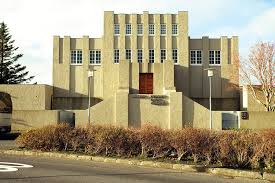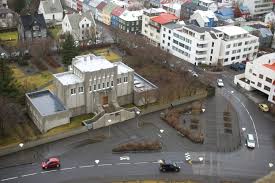


In 1909, Einar Jónsson offered all of his works as a gift to the Icelandic people on the condition that a museum be built to house them. This gift was not accepted by the Icelandic Parliament until 1914, however. The Parliament contributed 10,000 crowns to the construction of the museum, while a national collection yielded 20,000 crowns in private donations. It can be safely said that the Icelanders had from the very beginning shown a special appreciation for the art of their country's first sculptor and had fully realized the value of his gift to the nation.
Jónsson chose to locate the museum on the top of Skolavorduhaed, "a desolate hill on the outskirts of town," as he puts it in his autobiography. The museum was the first building to be constructed on the top of the hill and Jónsson realized what possibilities this location, the highest in town, offered. Like some of his contemporaries, he dreamt of Skolavorduhaed becoming the political and cultural Acropolis of an independent Iceland. The museum was built according to a plan by the artist and it may thus be said that the museum building constitutes his biggest sculpture. The building served as his studio, as a gallery for his works and even as his home.
The museum building is indisputably the work of Jónsson, although it was the architect Einar Erlendsson who officially signed the plans for the museum in June 1916, the same year the foundation of the museum was laid.The Einar Jónsson Museum was officially opened on Midsummer's Day in 1923. This was a watershed event for Icelandic art, as the building was the country's first art museum. The building rises from a high and heavy pedestal, as if it were a sculpture, and its architectural style mirrors the stylistic upheaval of the turn of the century, a time during which people were searching for new forms of expression. It is not possible to place the building under any one stylistic heading. Far from being an expression of classicism, the building is a typical example of eclecticism; in other words, ideas from a variety of different sources were utilized in its design. A similar attitude is prevalent today as we near the end of the century; no single style is dominant and everything is permitted.



